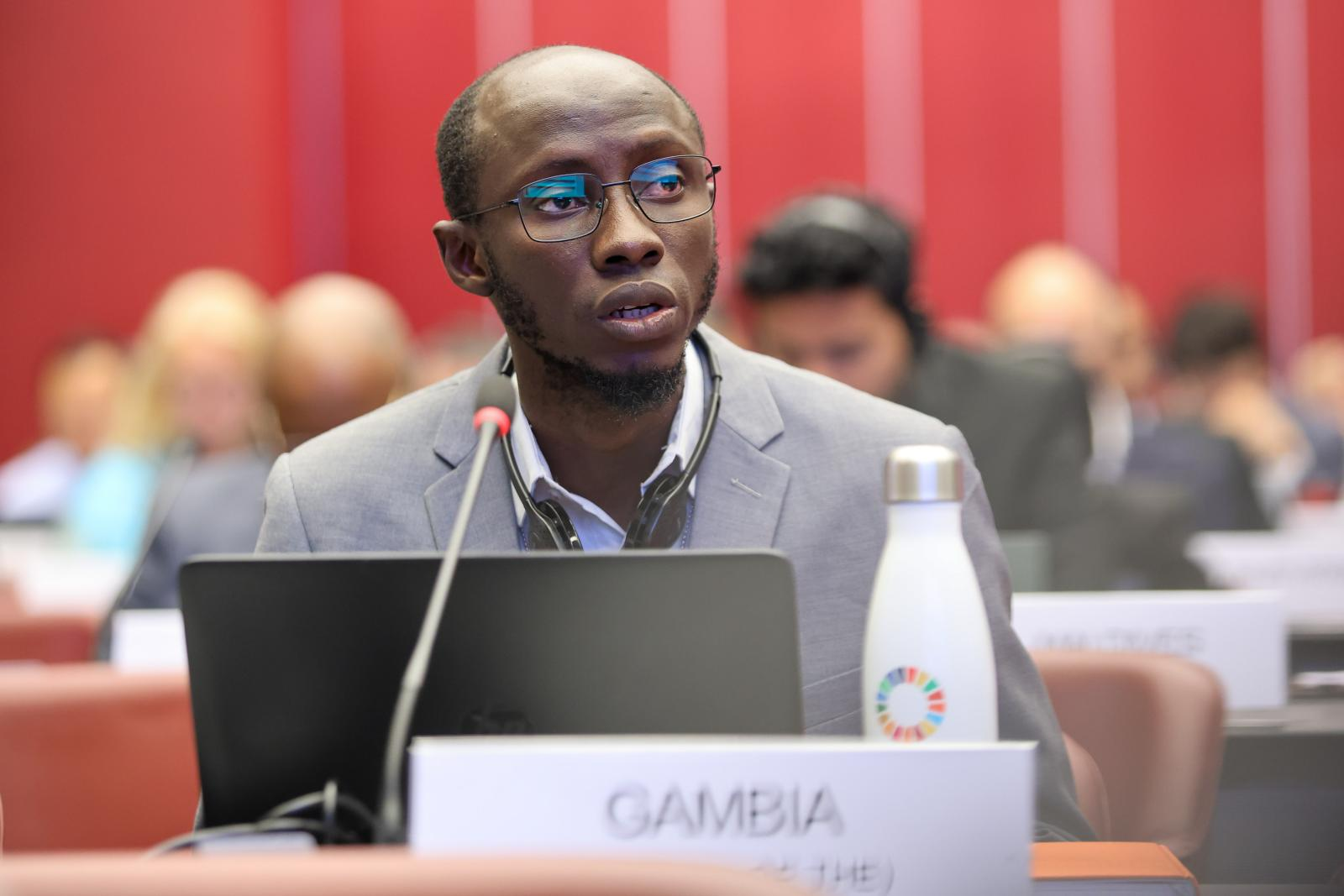Reflections from Dr. Fouad Bergigui’s presentation at the regional workshops for Latin America and the Caribbean (26 August 2025), and for Europe, Asia, and Africa (27 August 2025) on Gender Mainstreaming in National Implementation Plans. During these workshops for both regions, Dr. Fouad Bergigui delivered a powerful presentation that dissected one of the most pressing yet often overlooked challenges in the field of chemicals governance: the treatment of gender.
By Fouad Bergigui
When we talk about gender, we are not only talking about women. Gender is about the roles and expectations societies assign to women and men — roles that shape exposure to risks, access to opportunities, and influence in decision-making. Unlike sex, which is biological, gender is learned, dynamic, and context-specific.
And here lies a paradox: in a field where chemicals are measured in nanograms, ignoring gendered exposure pathways is not just a technical gap — it is a critical blind spot. POPs may not discriminate, but our social systems do. Chemicals policy has too often relied on technical precision while overlooking this social dimension.
What the Data Tells Us: Where We Stand
The Policy on Gender Equality, approved by the Global Environment Facility (GEF) in 2017, showcased a shift from a “not harm” to a “do good” approach by requiring robust standards to enable projects to move across the gender mainstreaming spectrum from gender-awareness to gender-responsiveness.
Consecutive evaluations of projects in the focal area of chemicals and waste conducted in 2018 and 2024 showed significant progress in addressing gender inequalities. Nevertheless, most projects were “trapped in the middle,” highlighting the need for more efforts to translate good project design into transformative gender outcomes.
Women may be present at workshops, but often lack protective equipment, health check-ups, or real decision-making influence. Men may be recognized as the primary groups working with POPs on the frontlines, but women’s invisible exposures — washing contaminated clothes, fetching water for mixing pesticides, reusing empty contaminated containers — remain uncounted.
Too often, gender mainstreaming is reduced to a headcount exercise. Mainstreaming gender is not only about how many women and men you invite to awareness-raising workshops. It’s about whether they can speak, be heard, be empowered, and shape what happens next.
That shift — from parity to empowerment and influence — is the real measure of progress.
Entry Points for Action
Moving from awareness to action means embedding gender into the very architecture of NIPs. Six domains are particularly critical:
• Stakeholder engagement: Consult women, men, and vulnerable groups (e.g., farmers, informal workers, unions, community leaders). Create enabling spaces for meaningful participation, not token presence.
• Inventories and monitoring: Ensure gender balance in expert teams, collect sex-disaggregated and gender-differentiated data, and record differentiated impacts throughout the inventory process where possible.
• Safer alternatives: Ensure women and men have equal access to finance, assets, and training. Use sex-disaggregated cost estimates to show the true burden of POPs. Promote women’s leadership in research and development towards safer alternatives.
• Knowledge management: Involve gender specialists alongside POPs experts. Build institutional memory with gender focal teams. Share practices across regions.
• Health: Recognize gendered health pathways, from maternal health to occupational risks. Strengthen sex-disaggregated health surveillance through public health agencies.
• Socio-economic aspects: Address invisible economic costs, child labor risks, and ensure access to social protection, especially for informal workers.
Mainstreaming gender in NIPs also depends on how we finance the proposed change. That means applying gender-responsive budgeting; opening doors to microfinance and mobile money for groups underserved by traditional financial mechanisms and systems; and making sure incentives for safer, non-POPs alternatives are reachable by women, men, and vulnerable groups.
Practical Aspects of Integrating Gender
If gender is going to live in our NIPs, it has to live not only in strategies and workshops, but also in the everyday mechanics of how projects are designed and run. Inclusion is often decided in the small, procedural choices we make — choices that either reinforce barriers or open doors.
It starts with Terms of Reference and tender documents. Inclusive language, explicit gender responsibilities, and local translations make it clear that gender is not optional. Next, disseminating information about opportunities matters: reaching beyond the usual networks and explicitly welcoming women-led businesses and underrepresented candidates broadens participation.
Selection panels also shape outcomes. Gender balance on committees, and interview questions that test gender competence, influence who is selected. Once people are hired, contracts should link performance to gender outcomes and include codes of conduct, so accountability continues. Inclusivity is then tested in workshop planning. Choosing times and venues that fit domestic workloads, providing childcare where possible, and creating women-only cohorts when needed make participation real, not symbolic. The same applies to capacity building: gender must be part of technical training, and women should be engaged as trainers, not just participants.
Finally, site activities need careful design too. Risk management plans should use sex- sex-disaggregated data, and tasks should be assigned with care to avoid exposing caregivers and to protect women of reproductive age from the most hazardous roles.
Each of these steps may seem procedural, but together they decide whether gender mainstreaming stays on paper or becomes reality in daily NIP implementation.
Seeing the Invisible: A Case Study on Gender and Pesticides
To showcase entry points for mainstreaming gender in practice, one clear example comes from pesticide use — including DDT — in agricultural setups. It illustrates how gender norms directly shape exposure patterns, and why mainstreaming is not a theoretical exercise but a practical necessity.
In such contexts, men are trained as sprayers, often using protective equipment and vehicles to transport pesticides. They appear in risk assessments, are more likely to wear protective gear, and are formally recognized as “at risk.” Women, however, may be the main applicators in women-headed households. More commonly, they also fetch water for mixing these pesticides, wash contaminated clothes that men wore while spraying, reuse pesticide containers for food and water, and spend long hours in treated interiors with children (in cases when DDT is sprayed indoors for malaria control).
Awareness levels remain especially low among women, who may not know that POPs accumulate in food and breastmilk. Men, by contrast, are more likely to receive training and equipment. Cultural stereotypes reinforce these divisions: spraying is labelled “men’s work,” while laundry and caregiving are labelled “women’s work.” The outcome is stark: men are counted, trained, and protected; women are exposed, often chronically, but remain invisible. Unless NIPs address these blind spots, half the risk landscape will remain uncharted — undermining both equity and effectiveness.
Gender-Disaggregated Data: Linking POPs and People
Detailed frameworks on gender and data already exist — for example, in UNEP’s guidance on Incorporating Gender Dimensions into National Strategy Setting in Chemicals Management. What needs to be highlighted here is not the technical annexes, but the principles that connect POPs and people.
When we conduct an inventory, we learn which POPs are present, where they are located, and how high the levels of contamination are. The next step is to ask: who is actually living, working, or moving in and around these sources of exposure? This is where gender-disaggregated data becomes indispensable.
For each POP identified or for the whole sector, we need to consider:
• Which occupations are commonly associated with exposure to the identified POPs?
• How many women and how many men are engaged in these roles?
• Who performs the support tasks that often go uncounted, such as, but not limited to, washing contaminated clothes, reusing pesticide containers, or caregiving in DDT-treated spaces?
• Which groups, such as youth, the elderly, or informal workers, are indirectly but consistently exposed?
By bridging the gap between technical and social datasets, NIPs can visualize a much clearer picture of real people’s daily vulnerabilities. It is only when we see both together — POPs and people — that we can design actions and interventions that truly protect everyone.
Final Reflection
Gender mainstreaming is not about checking boxes—it’s about shifting structures. Huge efforts were deployed to mainstream gender considerations into NIPs, yielding promising results. Moving forward, to protect those most at risk, initiatives such as the Global NIP Update Project offer a critical opportunity to do things differently. The framework exists. The tools are here. What remains is commitment: to move beyond awareness to transformation, from parity to empowerment, from counting presence to amplifying influence.



